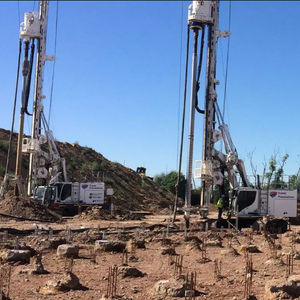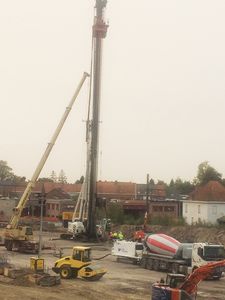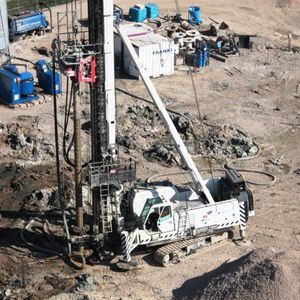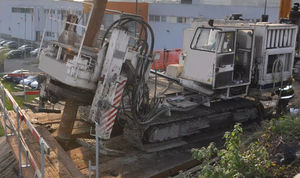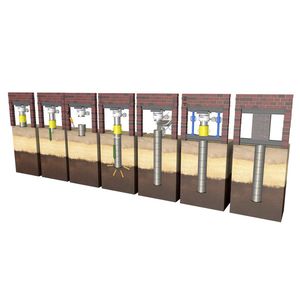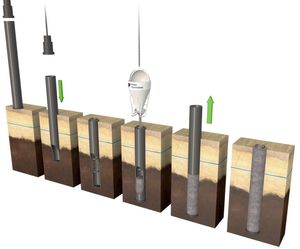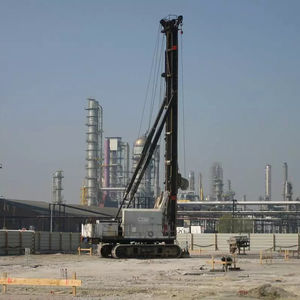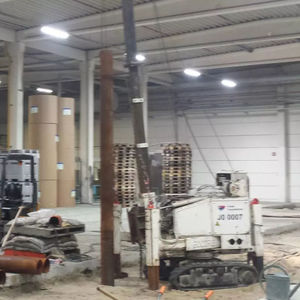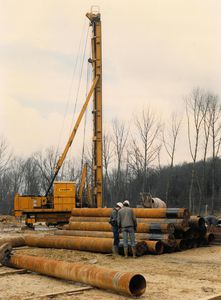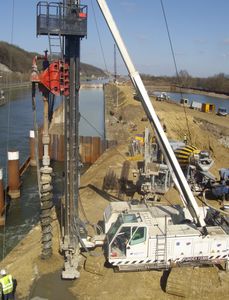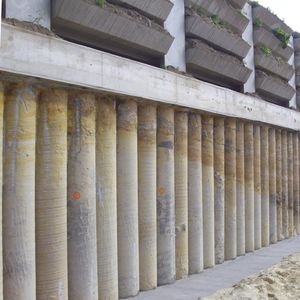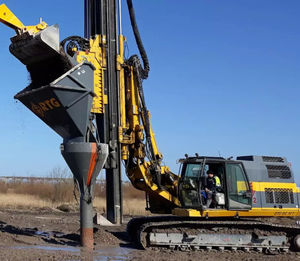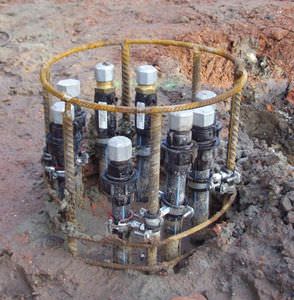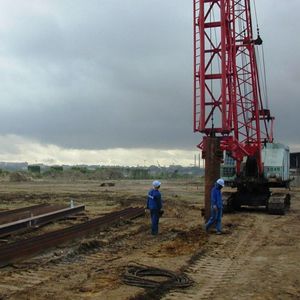
- Building & Construction
- Sanitation, Drainage
- Ground improvement grouting
- FRANKI FOUNDATIONS BELGIUM
- Products
- Catalogs
- News & Trends
- Exhibitions
Compensation grouting RIGID INCLUSION OMEGAground improvement







Add to favorites
Compare this product
Characteristics
- Type
- compensation
- Function
- ground improvement
Description
Soil improvement by means of rigid inclusions (also called compaction grouting columns or grout injected columns) results in a flexible foundation system with controlled settlements. The inclusions are executed with a screw especially designed for lateral soil displacement and injection of grout or concrete with a low strength class. Compaction grouting is used to improve the soil mechanical characteristics of compressible soils and increase the stiffness of the soil mass. The columns control and reduce the largest settlements by transferring the vertical load of the upper structure to the underlying load bearing stratum in which the inclusions are installed.
Construction sequence
1. Placement of the screw head. A lost closing nut tip, located under the screw prevents any penetration of water and / or soil during screwing-in. .
2. The especially designed auger, powered by a hydraulic rotary table with large torque capacity and static down thrust, displaces the soil laterally during the screwing-in phase.
3. Vibration-free screwing-in of the screw with its displacement body up to the requested design depth.
4. During the extraction phase of the auger, grout or concrete with a lower strength class is pumped under controlled pressure through the hollow, central tube into the borehole.
5. Completed rigid inclusion, illustrated with an enlarged head.
Technical specifications
• An enlarged head may optionally be realised to improve distribution of the load of the upper structure towards the rigid inclusion
VIDEO
Other FRANKI FOUNDATIONS BELGIUM products
Pile foundations
*Prices are pre-tax. They exclude delivery charges and customs duties and do not include additional charges for installation or activation options. Prices are indicative only and may vary by country, with changes to the cost of raw materials and exchange rates.


